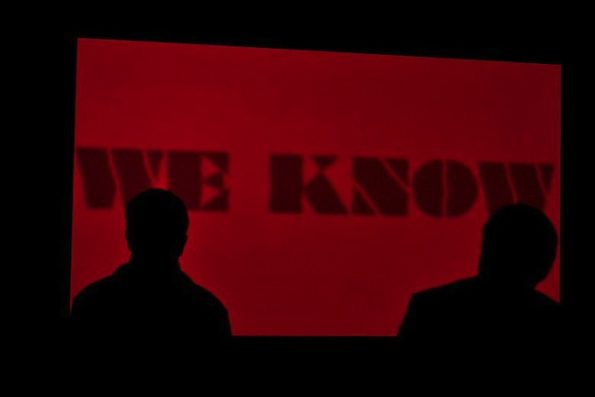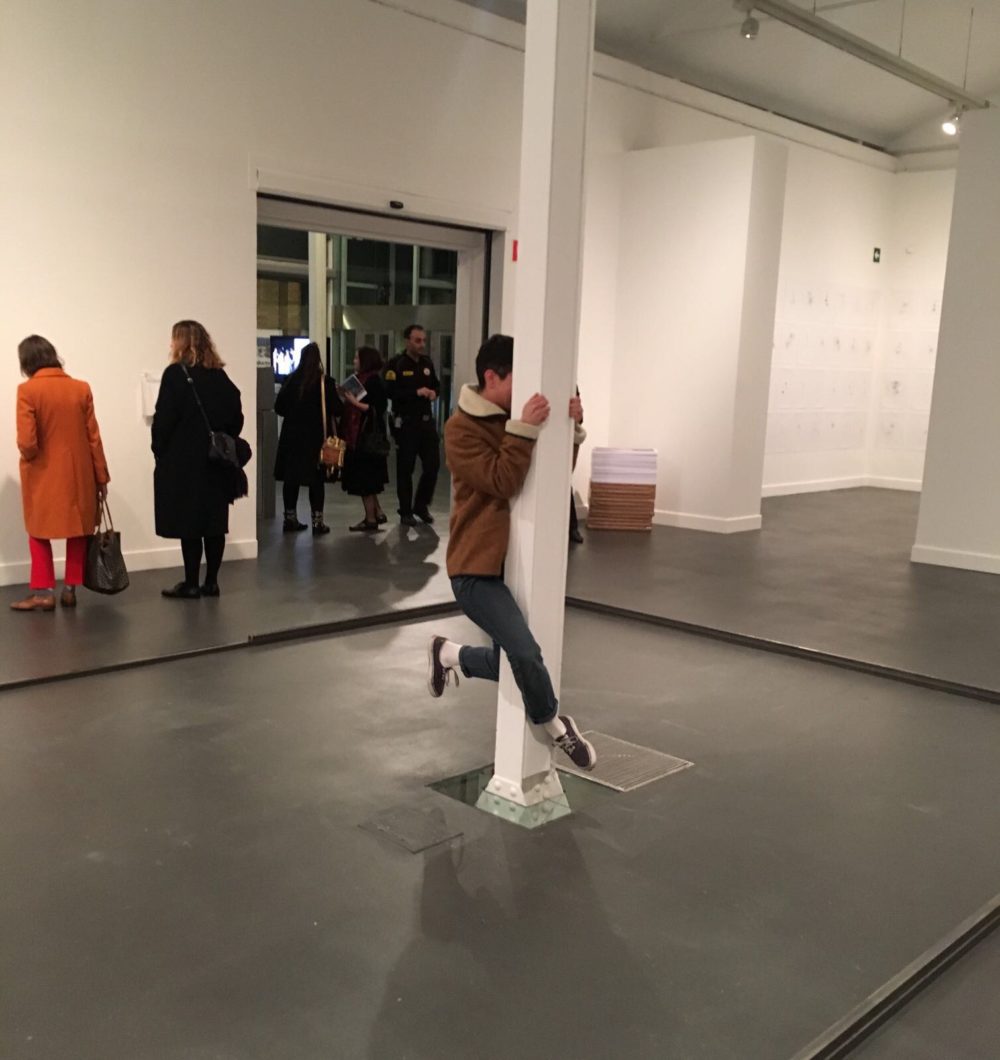Search
To search for an exact match, type the word or phrase you want in quotation marks.
A*DESK has been offering since 2002 contents about criticism and contemporary art. A*DESK has become consolidated thanks to all those who have believed in the project, all those who have followed us, debating, participating and collaborating. Many people have collaborated with A*DESK, and continue to do so. Their efforts, knowledge and belief in the project are what make it grow internationally. At A*DESK we have also generated work for over one hundred professionals in culture, from small collaborations with reviews and classes, to more prolonged and intense collaborations.
At A*DESK we believe in the need for free and universal access to culture and knowledge. We want to carry on being independent, remaining open to more ideas and opinions. If you believe in A*DESK, we need your backing to be able to continue. You can now participate in the project by supporting it. You can choose how much you want to contribute to the project.
You can decide how much you want to bring to the project.

Exhibitions linked to a prize have something that other exhibitions don’t have: the singular condition lying behind the silent battle between its participants, one upon which majority of conquests are constructed, an award, in this case of the calibre of the Turner Prize Thinking of the spectator, who accesses a space delineated by the construction of a subtle but intangible grid, it is not the same visiting the rooms of the Tate Gallery before or after the decision of the jury is known. Because, it’s maybe worth pointing out, when the winner is still unknown, the attention dedicated to observing the projects exhibited is more homogenous. Like an aesthetic detective, the spectator surveys everything looking for indications and premonitory proof of an external decision, despite this continuous call to the audience practiced within the sphere of the arts. However, when one knows the winner beforehand, our attention is usually mediated by the status quo of a prize that inevitably hierarchizes the artistic routes. And our reception.
Faced with an event like the Turner Prize, many of us feel driven to talk more about those who were nominated but didn’t win. One might even, in a delirium of subversion, be tempted to construct another exhibition with other projects and other artists. Occasionally it happens that, with a touch of resignation for concurring with the consensus, one coincides with the evaluations of a jury and leaves the exhibition space, when the winner is still only a hypothesis, with one project still fresh in the memory: The Woolworths Choir of 1979 by Elisabeth Price.
Price was nominated for her exhibition at the BALTIC Centre for Contemporary Art in Gateshead, where she presented a trilogy of video-installations, including the piece that occupies a dark space in the Tate. The work functions by combining and reanimating pre-existing texts and archive images and a structural and narrative use of sound. In The Woolworths Choir of 1979 we find what could serve to define the video-installations of this artist: the presence of an omniscient authoritarian narrator who, far from appearing through the strategy of the subtitle, appears through definitions and odd phrases in the form of slogans, in a typography that invokes the style of Barbara Kruger; a predominantly black and white visual aesthetic predominantly that constructs the atmosphere of early science-fiction films where the human presence performs an objectifying function; the creation of a space ulterior to the image, arising out of the ambient inoculation of the sound.
This insistence on the space, now architectonic, is repeated within the configuration of the narrative. The Woolworths Choir of 1979 sequentially originates within the polysemy of the term “choir”. By simultaneously defining an ecclesiastical zone, a group of singers and sheaves of paper waiting to be bound, Price triggers through a series of interconnections a second reading, one that links artistic procedures with social and archival ones. As a corollary the video ends amidst unified applause with the event from where the title originates: a fire in a furniture warehouse of the brand Woolworths, in Manchester, 1979. To understand the impact provoked by this piece it is enough to employ one simple but conclusive reason: our audio-visual patience is now limited to only a few minutes, but the twenty minutes of The Woolworths Choir of 1979 pass in a blur, and once over, one is drawn to repeat them.
Spartacus Chetwynd, Paul Noble and Luke Fowler are the remaining artists who make up a prize that, despite the eroticism of victory, bases part of its attraction on the momentary uncertainty and in the grouping of the show. Spartacus Chetwynd, with an installation derived from a performance, Odd Man Out, proposes another project where the “hand-made” carnival is mixed with dense theoretical references and the structuring of social communities, creating a ritual event in which the spectator is directly appealed to and where another problematic arises: does the audience form part of a project simply by transforming the exhibition space into the representation of a ceremony, when the spectator remains permanently in the role that the artist assigns him?
All divides selves is a documentary by Luke Fowler surrounding the figure of the anti-psychiatrist RD Laing. As in previous works, a marginal figure becomes the protagonist, employing a narrative of pursuit that converts the spectator into a witness. Uniting the experimental aesthetic of expanded film with a visual structuralist language, Fowler seems to understand documentary film as a sort of sociological study with which to analyse peripheral situations and forms of behaviour. Like any investigator, despite the artist’s s self-proclaimed neutrality, his stance is already implicit in the choice of subjects. Possibly the greatest complaint about All divides selves a product of its cinematographic character, is its length and the (im)pertinence of integrating these formats into a space, like the museum space, that is so prone to intrusion and distraction. In its favour one could argue that if anything lends value to the artistic terrain it is its certain and eventual legitimation of the inconvenient. Understood as a disconformity with the reading times to which we are becoming accustomed and trained.
The room occupied by Paul Noble is presided by fragments of Nobson Newton, a world submerged in the 90s where a visual fiction is drawn, literally, in which chivalric perspectives, satire, typographical architecture, the word -invented- as a nucleus and structural embryo, the figures of Henry Moore and an idea of a geography without spatial-temporal references all intermingle. By way of this illegitimate exercise of judge and jury that a synthetic exhibition like the Turner Prize induces in the spectator, Paul Noble would have come out of the winner’s door, prior to discovering Elisabeth Price and The Woolworths Choir of 1979. However, it’s difficult, not to say unfeasible, to make a decision about an exhibition that brings together works from other exhibitions that one hasn’t seen and which are the motive for their nominations to the Turner. What is more, is it possible to metabolize an exhibition that arises out of, and for, a prize without filtering it through the hierarchies, categories and fetishes instigated by the competition?

artwriter_curator_esnorquelmaker_chocolateresearcher_technodancer__bikeenthusiast_coffeeaddicted_
"A desk is a dangerous place from which to watch the world" (John Le Carré)